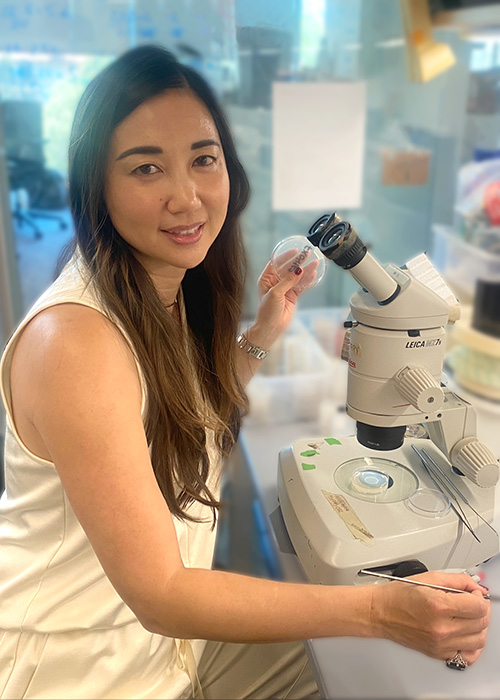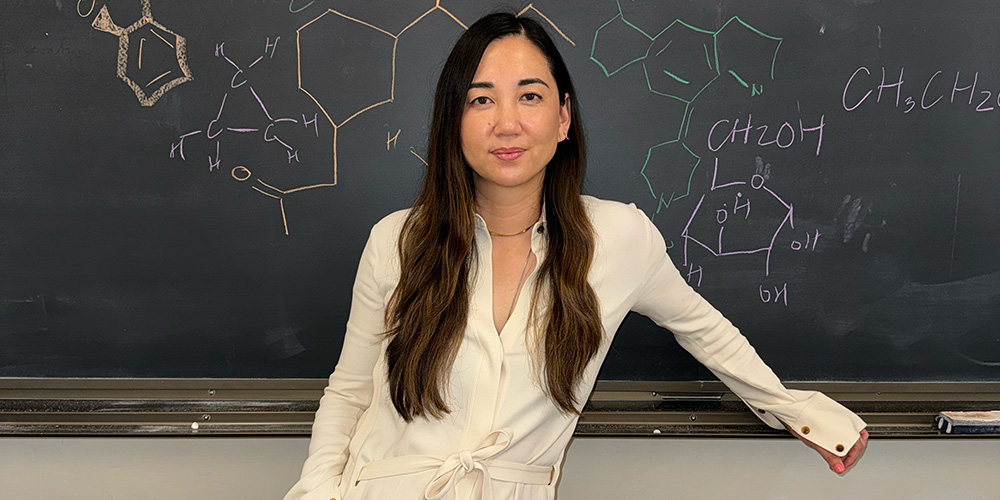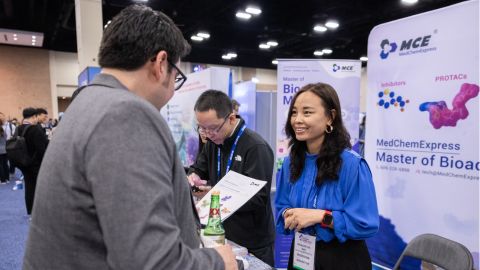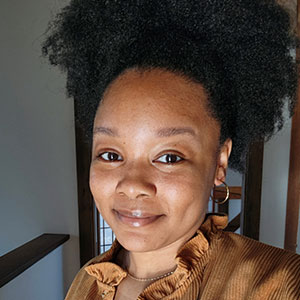Biotech startup worms its way into therapeutics
Last March, Andrea Choe walked onstage at the Techcracker Lab startup event at the Tokyo Medical and Dental University and introduced her ongoing research.
“Our mission and vision is to provide relief for millions of people with debilitating diseases using worms.”
Choe’s statement surprised the audience of undergraduate and graduate students. They had registered for this event to hear from Nobel laureate Jennifer Doudna and a number of entrepreneurs who used their scientific and medical degrees to establish biotechnology startups.
Choe was one of those entrepreneurs. She co-founded Holoclara, a company that develops anti-inflammatory therapeutics based on small molecules derived from worms.
The desire to create change

Choe has always been interested in brain disability research, particularly autism and schizophrenia. As an undergraduate at UCLA, she participated in the developmental disabilities immersion program. DDIP required an extra year of studies consisting of clinical experience and classes on understanding diseases in a clinical setting.
“That was almost like a precursor to an M.D./Ph.D. program,” Choe said. “In that setting I saw, for example, foster children with very severe developmental disabilities.”
She saw some of these children given medications with side effects such as extreme drowsiness, she said.
“When I tried to intervene, a school nurse gave me an interesting comment: ‘You’re not a doctor, and you’re not a scientist. Come back when you are,’” Choe said. “And I thought, point taken.”
After graduating from UCLA, Choe enrolled in an M.D./Ph.D. program at Caltech. Her Ph.D. research focused on the small molecule signaling mechanism of Caenorhabditis elegans, a species of nematode or roundworm. She became interested in the evolutionary biology of worms and the evolution of this signaling language.
"I feel like C. elegans is almost the center of the orbit for the worm species that other people are studying," Choe said. “And then research brings it back to C. elegans to see how those worms are different from C. elegans, in terms of genetics, or development, or signaling."
Choe reached out to scientists doing work on other worm species and models to collaborate in her project focused on worm evolution and communication.
Through this research, she determined the common signaling molecule that many nematode species use to communicate within their species as well as the host organism.
Choe's M.D./Ph.D. program required two years of clinical work after completion of her Ph.D.
"My interaction with patients in the final two years of the M.D. program and hearing their stories inspired me to leave my path as a physician–scientist and embark on the entrepreneurial journey," Choe said. "Ultimately, that's what patients need."
Holoclara, therapeutics and worms
Choe developed Holoclara with her graduate research in mind, as well as epidemiological evidence of the effect of gut worms on human disease. Researchers at Holoclara developed the novel therapeutic HC002 based on molecules derived from worms.
HC002 is intended to treat chronic inflammatory diseases, taking advantage of the natural ability of gut worms to prevent inflammatory responses in humans.
"There is a lot of evidence showing that areas of the world that still have gut worms have the lowest incidence of allergic and autoimmune disease," Choe said. “The question is, is there something protective about having a gut roundworm? And how can we harvest that?"
Preclinical data has shown that, when worms are introduced to hosts in a laboratory setting, they also reduce obesity and arthritis.
"Isolated gut roundworms returning into a mouse model of disease can protect against the disease," Choe said. "That links the epidemiological findings into the academic setting, and that's why wHeading 2e're doing what we're doing at Holoclara now."
Holoclara has selected eosinophilic esophagitis as its first target disease for HC002. Eosinophils, a type of white blood cell, normally reside in tissues of the lower gastrointestinal tract as well as the ovaries, prostate and lymph nodes. The presence of eosinophils in the lungs or esophagus is associated with disease.
Eosinophilic esophagitis, known as EoE, is an inflammatory disorder characterized by elevated levels of eosinophils in the esophagus. It causes difficulty swallowing, chest pain and vomiting. In children, the lack of nutrients due to these symptoms can cause poor growth and malnutrition.
“Worms don't just have the incentive to block eosinophilic pathways, I think that's their first incentive,” Choe said. “You want to put the fire out that’s coming after you. Then they have another incentive: to improve their host’s health and wound healing.”
Inflammatory processes in the lungs, gut and joints may not directly affect the life cycle of the worm, but Choe asserts it is still in the worm’s best interest to balance the inflammatory response. This mutually beneficial arrangement is the impetus for Holoclara’s work with worm-derived biomolecules.
The HC002 molecule is orally bioavailable and in the process of completing a clinical trial to determine safe dosage for humans.

More work to be done
Choe believes researchers have missed many opportunities to derive medicine and therapies from substances and conditions that have been developed in nature. Technologies such as CRISPR are being refined to take advantage of biological processes that already exist within DNA.
Ozempic, the diabetes drug now being used for general weight loss, was inspired by Gila monster venom, Choe said.
"I think now is the right time and the right place for this sort of technology to blossom."
Choe encourages graduate students and early-career scientists who want to become biomedical entrepreneurs to pursue their passions rather than choosing a career that they have lackluster feelings about.
“Whatever is going to keep you awake on nights and weekends, that’s going to drive you,” she said. “Something personally interesting to you that can help you to weather the ups and downs and find people around you to help you because they’re inspired by your drive.”
Enjoy reading ASBMB Today?
Become a member to receive the print edition four times a year and the digital edition monthly.
Learn moreFeatured jobs
from the ASBMB career center
Get the latest from ASBMB Today
Enter your email address, and we’ll send you a weekly email with recent articles, interviews and more.
Latest in Industry
Industry highlights or most popular articles

How Alixorexton could transform narcolepsy treatment
A new investigational drug, alixorexton, targets the brain’s orexin system to restore wakefulness in people with narcolepsy type 1. Alkermes chemist Brian Raymer shares how molecular modeling turned a lab idea into a promising phase 3 therapy.

Inside industry postdocs
As more Ph.D. scientists look beyond academia, industry postdocs offer a new kind of training, where mentorship meets mission-driven research. Fellows at Pfizer and Genentech share how these programs prepare them to translate discovery into impact.

Black excellence in biotech: Shaping the future of an industry
This Black History Month, we highlight the impact of DEI initiatives, trailblazing scientists and industry leaders working to create a more inclusive and scientific community. Discover how you can be part of the movement.

Attend ASBMB’s career and education fair
Attending the ASBMB career and education fair is a great way to explore new opportunities, make valuable connections and gain insights into potential career paths.

Benefits of attending a large scientific conference
Researchers have a lot of choices when it comes to conferences and symposia. A large conference like the ASBMB Annual Meeting offers myriad opportunities, such as poster sessions, top research talks, social events, workshops, vendor booths and more.

How military forensic scientists use DNA to solve mysteries
Learn how two analysts at the Armed Forces DNA Identification Laboratory use molecular biology and genetics to identify the remains of fallen troops.

